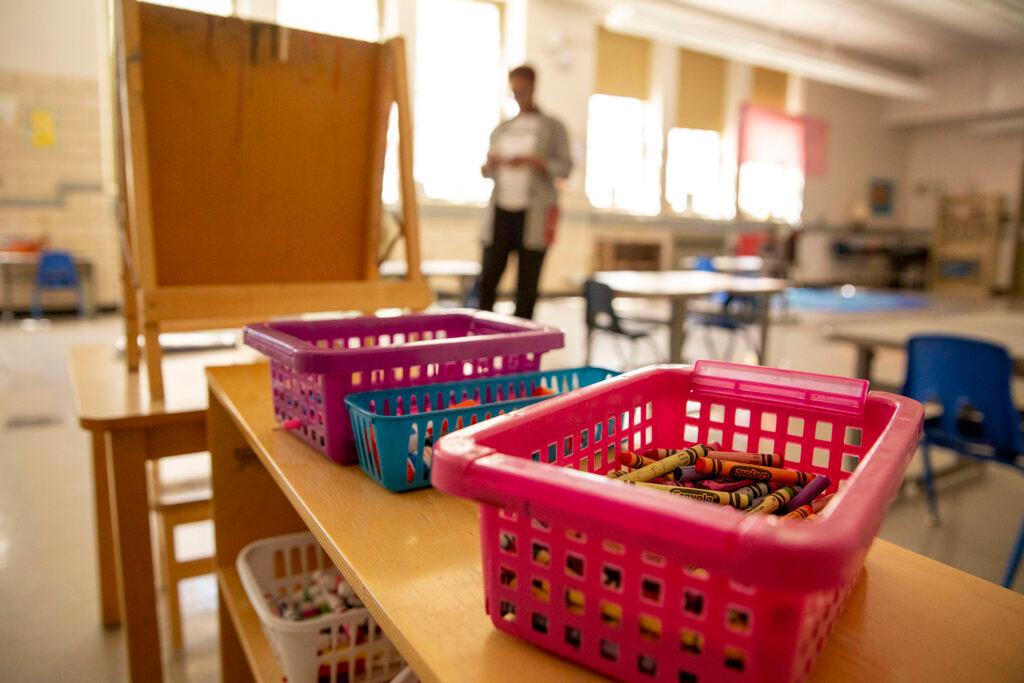Communities in the lower Arkansas River Valley have had issues with drinking water for years, including discoloration and poor taste. Recent data shows that two dozen water systems in the valley contain radioactive contaminants and are in violation of the Clean Water Act. There’s a possible solution though — the Arkansas Valley Conduit. It’s a pipeline that would deliver cleaner water from Pueblo Reservoir to the rest of the region. It’s been in the works for decades but has yet to be completely funded.
Numbers from the state health department show water systems in the valley have radium levels 63 times higher than those detected at Pueblo Reservoir. Radium is a known carcinogen. The water systems also had comparatively higher levels of uranium, another carcinogen.
"Deeper wells often have elevated levels of radioactive materials," Woodka said. "And nearly all of the communities east of Pueblo take water from wells."
These water quality violations were found in La Junta, Rocky Ford, Manzanola, Swink, Cheraw and Wiley.
Chris Woodka is with the Southeastern Colorado Water Conservancy District. He said part of the reason we’re seeing more water systems violate water standards is that federal and state standards have changed. They are now accounting for even more minute quantities of contaminants.
He said water from wells can be especially affected because, “shallow wells in the alluvial aquifer are high in organic contaminants, nitrate and selenium.”
“Deeper wells often have elevated levels of radioactive materials,” he said. “And nearly all of the communities east of Pueblo take water from wells.”
Some communities have responded by using water filters. Las Animas and La Junta have both installed large reverse osmosis membrane systems to remove contaminants from the water supply. Woodka said that has improved the taste and appearance.
But, he said, even after filtration, radium and uranium can still remain in the water at low levels.
And then there’s the cost.
“Those communities still face tremendous expense in disposing of the waste from the treatment processes,” Woodka said, “which can only be reduced by adding more clean water.” And extra water, let alone clean water, is hard to come by in a drought-prone state like Colorado. But there is one possible solution that’s been in the works for decades.
It’s called the Arkansas Valley Conduit.

The U.S. Bureau of Reclamation describes the conduit as a “bulk water supply pipeline designed to meet existing and future municipal and industrial water demands in the Lower Arkansas River Basin.”
It would include about 130 miles of buried pipeline, a water treatment facility, and water storage tanks. Water would be routed to six counties - Pueblo, Otero, Crowley, Bent, Kiowa and Prowers - and would serve an estimated 50,000 people.
The project was first approved in 1962. Some work was completed in the early 1980’s, but the actual conduit has yet to come to completion. Woodka said that’s mainly because of cost.
“[These] communities could never afford to build [the conduit] themselves.” Woodka explained.
Congress passed a law in 2009 that reduced the amount of money local governments would have to pitch in for the project. Woodka said that finally made the construction of the conduit feasible.
But it’s still a $500 million project.
“The main problem that we've run into,” said Woodka, ”has been getting adequate federal appropriations to start building it. He said they are working on ways to lower the overall costs of the project.”
Woodka said lawmakers at the state and national level have been “extremely active” in promoting this project on both sides of the political spectrum.
Republican State Senator Larry Crowder represents the region. He wants to see action taken now and recently asked commissioners and residents of the six affected counties to send letters to Congress.
“I'm a pretty firm believer,” said Crowder, “there should not be any place in this country that you go that you cannot have good, clean, quality drinking water.”
He said the issue is disturbing.
“The cities and towns are doing everything they possibly can to mitigate the circumstances,” he said, “but the reality is that it's just not enough.”
He said the key now is for residents to get involved.
“We're getting the cities involved, we're getting the people in the cities involved to send letters to Senator Gardner, Senator Bennet and Congressmen Buck and Tipton,” he said, "to make sure that they are aware of how the people feel about it."
But, he said, it's a slow process.









